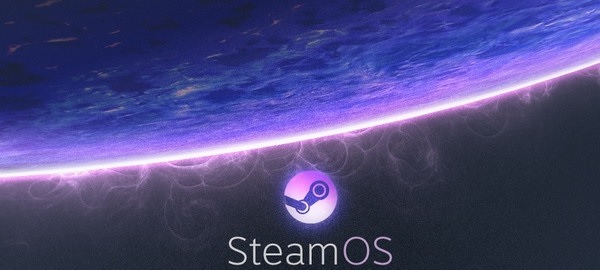Great news everyone as Valve’s SteamOS has just been released. The client is 960MB in size and can be downloaded from here (torrent link here). According to Valve, SteamOS is a fork (derivative) of Debian GNU/Linux. The first version (SteamOS 1.0) is called ‘alchemist’ and it is based on the Debian ‘wheezy’ (stable 7.1) distribution.
The major changes made in SteamOS are:
-Backported eglibc 2.17 from Debian testing
-Added various third-party drivers and updated graphics stack (Intel and AMD graphics support still being worked on)
-Updated kernel tracking the 3.10 longterm branch (currently 3.10.11)
-Custom graphics compositor designed to provide a seamless transition between Steam, its games and the SteamOS system overlay
-Configured to auto-update from the Valve SteamOS repositories
And here are the system requirements for SteamOS:
-Intel or AMD 64-bit capable processor
-4GB or more memory
-500GB or larger disk
-NVIDIA graphics card (AMD and Intel graphics support coming soon)
-UEFI boot support
-USB port for installation
SteamOS is designed to run Steam and Steam games. It also provides a desktop mode which can run regular Linux applications. SteamOS makes use of the standard APT package manager for software updates; you can add third-party sources to your subscribed repositories to gain access to more applications. SteamOS currently provides a limited set of packages, but many Debian wheezy packages work fine on SteamOS.
Here is how you can install SteamOS:
First method:
The easiest method is an image-based install using CloneZilla. You will need to create a SteamOS System Restore USB stick to perform this install. The image provided here requires at least a 1TB disk.
– Format a 4GB or larger USB stick with the FAT32 filesystem. Use “SYSRESTORE” as the partition name
– Unzip the contents of SYSRESTORE.zip to this USB stick to create the System
– Restore USB stick
– Put the System Restore USB stick in your target machine. Boot your machine and tell the BIOS to boot off the stick. (usually something like F8, F11 or F12 will bring up the BIOS boot menu).
– Make sure you select the UEFI entry, it may look something like “UEFI: Patriot Memory PMAP”
– Select “Restore Entire Disk” from the GRUB menu.
– System Restore will proceed automatically. When it is complete it will reboot into your freshly re-imaged SteamOSSecond Method:
The second method is based on the Debian Installer. It requires multiple configuration steps:
– Unzip the SteamOSInstaller.zip file to a blank, FAT32-formatted USB stick.
– Put the USB stick in your target machine. Boot your machine and tell the BIOS to boot off the stick. (usually something like F8, F11, or F12 will bring up the BIOS boot menu).
Make sure you select the UEFI entry, it may look something like “UEFI: Patriot Memory PMAP”
– Pick “Automated Install” from the next menu.
– The rest of the installation is unattended and will repartition the drive and install SteamOS.
– After installation is complete, log onto the resulting system (using the Gnome session) with the predefined “steam” account. The password is “steam”. Run steam, accept the EULA, and let it bootstrap. Logoff the steam account
– Log on with the “desktop” account. The password is “desktop”
– From a terminal window, run ~/post_logon.sh. This will prompt for a password – enter “desktop”. This script will perform the post-install customizations, delete itself, then reboot into the recovery partition capture utility.
– Confirm “y” to continue and the recovery partition will be created. When it is finished, reboot into your freshly installed SteamOS
Have fun everyone!

John is the founder and Editor in Chief at DSOGaming. He is a PC gaming fan and highly supports the modding and indie communities. Before creating DSOGaming, John worked on numerous gaming websites. While he is a die-hard PC gamer, his gaming roots can be found on consoles. John loved – and still does – the 16-bit consoles, and considers SNES to be one of the best consoles. Still, the PC platform won him over consoles. That was mainly due to 3DFX and its iconic dedicated 3D accelerator graphics card, Voodoo 2. John has also written a higher degree thesis on the “The Evolution of PC graphics cards.”
Contact: Email

